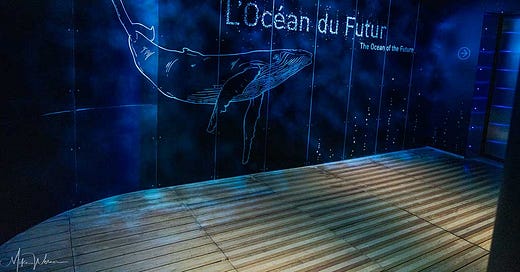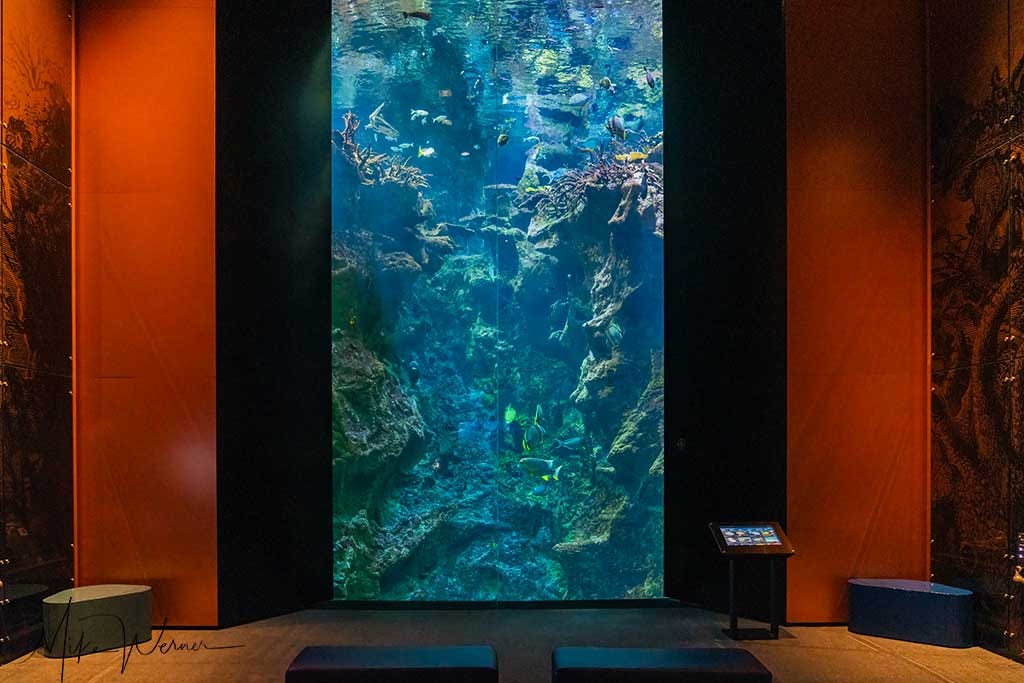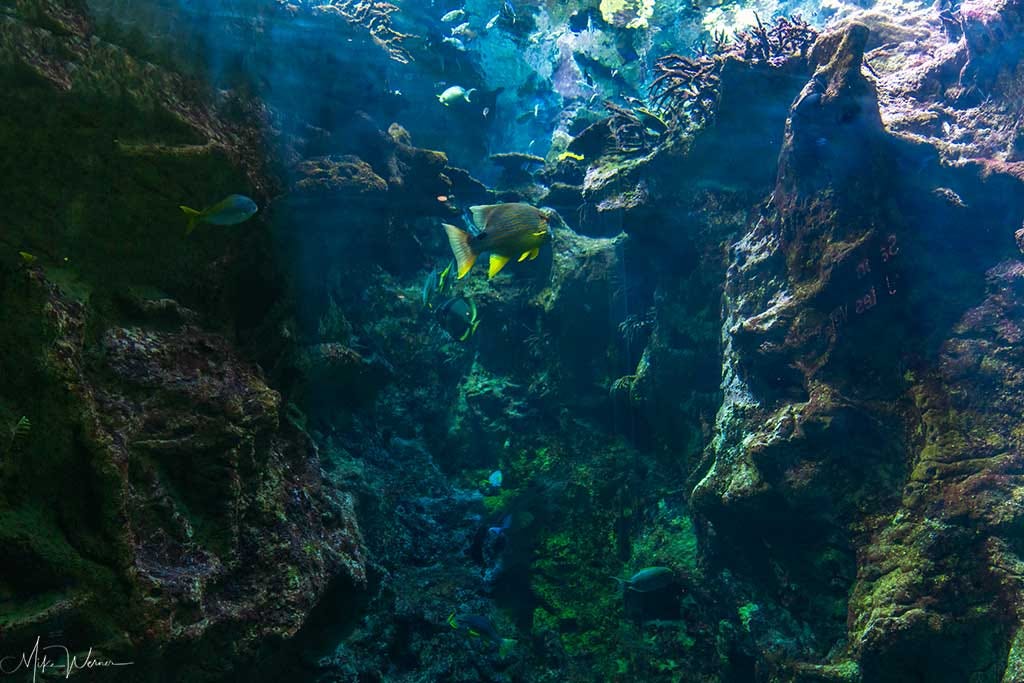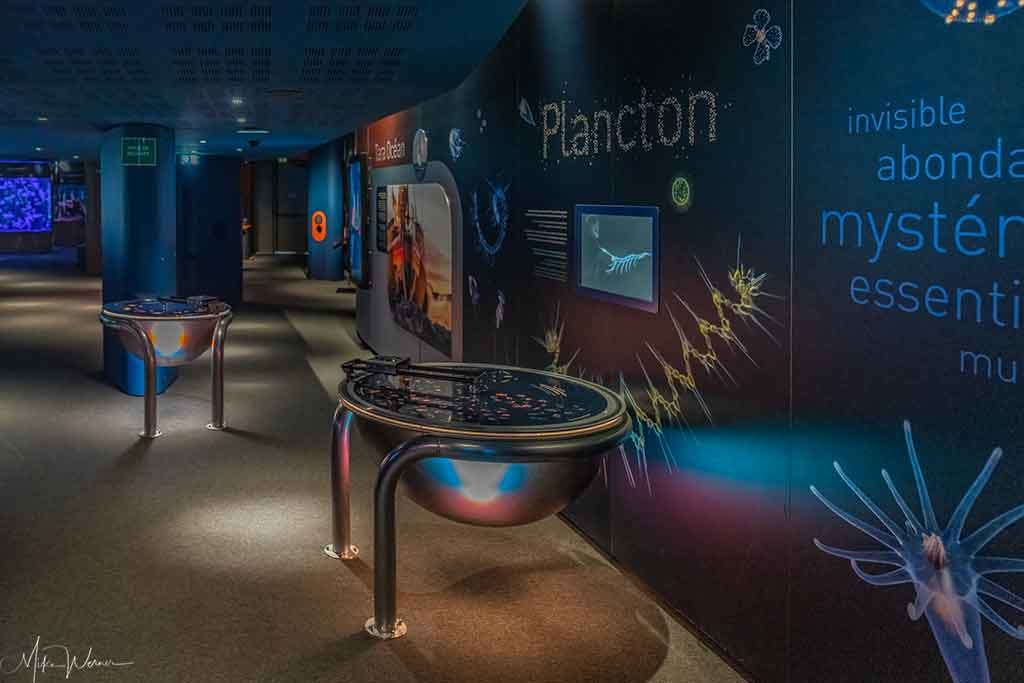The Ocean of the Future exhibition at La Cité de la Mer in Cherbourg-en-Cotentin is a large-scale, immersive experience dedicated to the exploration of the marine world. Opened in 2019, the exhibition extends over three floors and occupies approximately 1,400 square meters. It is designed to both inspire wonder and raise awareness about the fragility of marine ecosystems.
Click here to read our introduction to Cherbourg-en-Cotentin.
Click here to read our introduction to the La Cité de la Mer.
Click here to see where the Aquarium is located on Google Maps.
The centerpiece of the exhibition is the Abyssal Aquarium, which is 11 meters deep and the deepest in Europe.
It holds 350,000 liters of seawater and contains around 1,000 brightly colored Polynesian fish, representing a Tahitian atoll ecosystem in a visually stunning way.
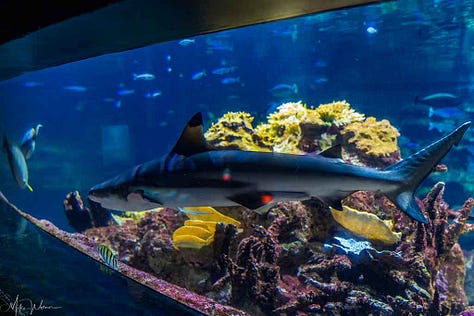
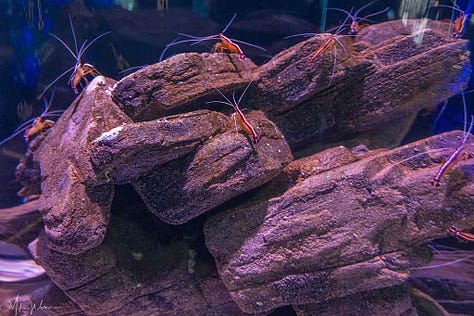


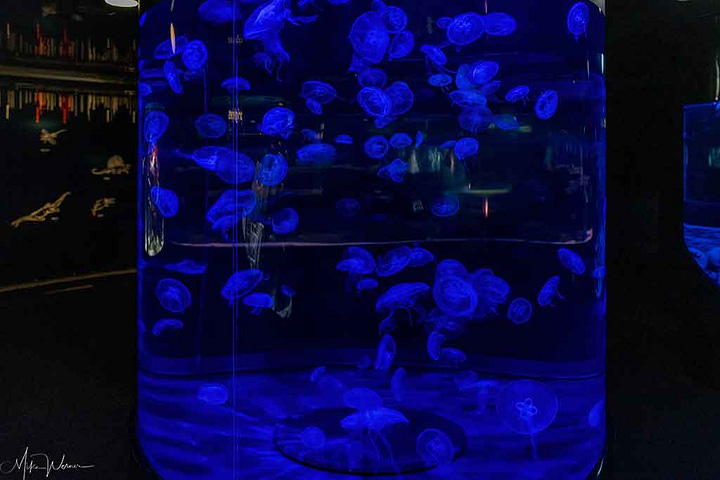
In total, the exhibition includes 17 aquariums, each highlighting different aspects of marine biodiversity. Species featured include jellyfish, clownfish, octopuses, blacktip reef sharks, seahorses, and nautiluses. These living exhibits are enriched with high-resolution multimedia projections that bring to life great ocean creatures such as whales, dolphins, sharks, and giant squid. These projections are displayed on enormous walls and ceilings, immersing visitors in the vastness of the ocean.
A significant section of the exhibition is dedicated to plankton, showcasing its invisible but crucial role in producing over half the planet’s oxygen. Interactive displays allow visitors to zoom in on microscopic marine life and understand its importance within the broader ecological balance.

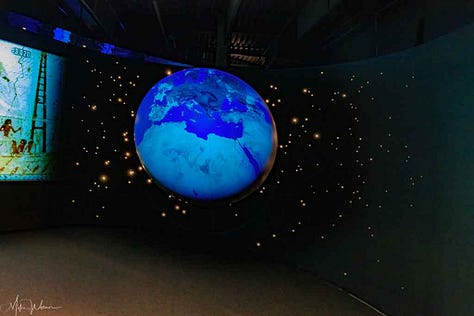

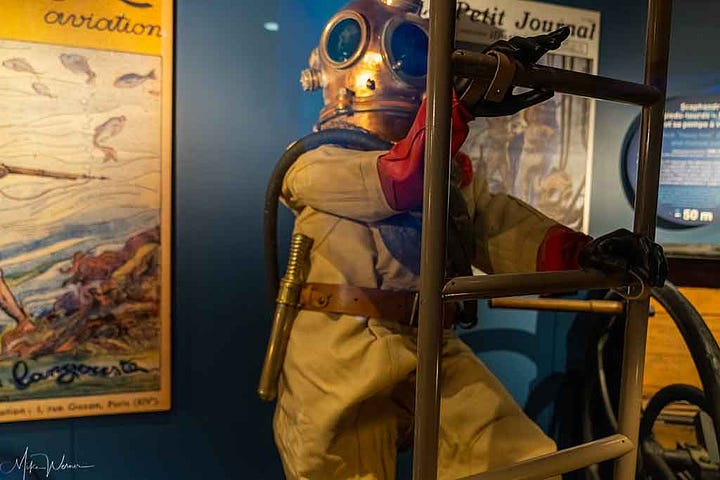
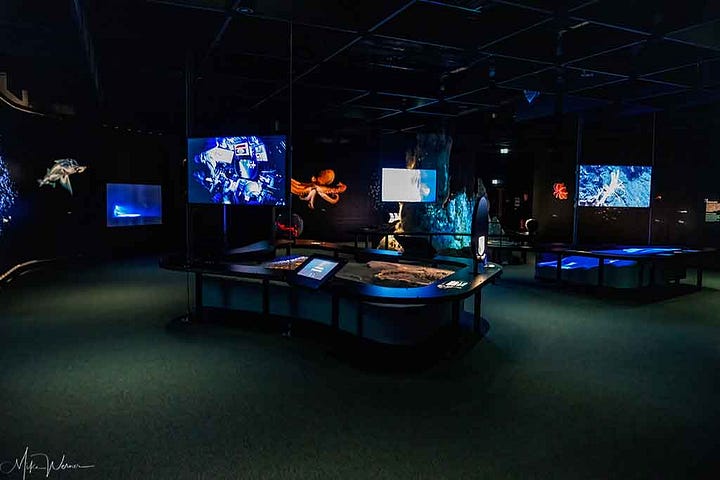
The exhibition also includes historical and visionary elements. It references human fascination with the deep sea through figures like Jules Verne and James Cameron and displays the evolution of underwater exploration technologies. Visitors can interact with digital globes, touchscreen interfaces, and large-scale video mappings that narrate the story of marine science and discovery.
A more sensory-oriented area, called the “Sea Gardens,” invites visitors to engage with textures, colors, and sounds related to underwater environments. Another area, the “Laboratory of the Future,” explores how the ocean contributes to fields such as medicine, pharmacology, cosmetics, and sustainable food sources.
The final section addresses the threats facing the ocean: pollution, climate change, overfishing, and biodiversity loss. It aims to convey both urgency and hope, encouraging sustainable choices and a deeper appreciation of the sea’s role in sustaining life on Earth.
All of this is set within La Cité de la Mer’s historic home: the former Gare Maritime Transatlantique, a 1933 Art Deco building. The venue also includes other major attractions, such as Le Redoutable (the largest submarine open to public visits in the world) and an extensive exhibition about the Titanic’s last port of call, which was Cherbourg.

